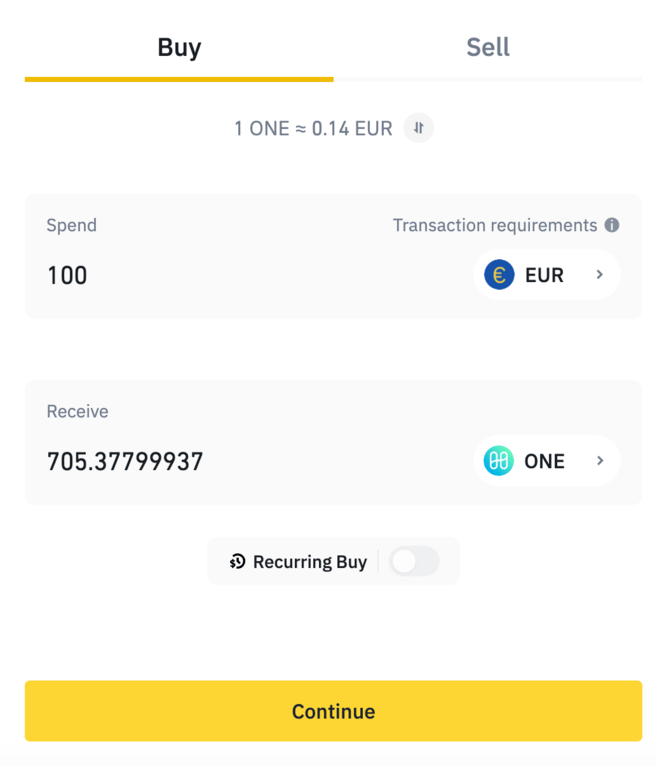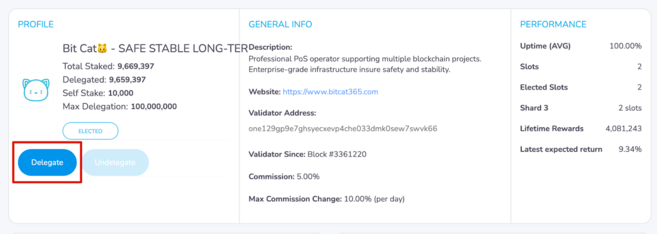Summary
Harmony is a layer 1 blockchain that enables scalability, security and decentralization through sharding and valid proof of stake. Launched in 2019, the network features a trustless cross-chain bridge and four shards to process transactions in parallel. Valid proof-of-stake encourages decentralization among validators, while sharding shares network load among validators, delegators, and users.
Its native token ONE coin can be used to pay transaction fees, participate in governance, and perform equity pledges. You can buy ONE Coin on Binance using a credit or debit card, or exchange it for another cryptocurrency. Once you purchase ONE Coin, you can store it in EVM-compatible wallets such as MetaMask and Binance Chain wallets.
Introduction
If you are looking for new opportunities or cryptocurrency use cases, try different altcoins project. You may have noticed the Harmony Network, or heard about it in the cryptocurrency media. To help you learn more about the project, here we outline its background, key points, and some of the ways you can get involved.

What is the Harmony blockchain?
Harmony is an Effective Proof of Stake (EPoS) blockchain founded by Stephen Tse in 2018, with the mainnet launched in 2019. Like most networks created after Ethereum, Harmony claims to solve the blockchain trilemma of decentralization, scalability, and security. Harmony’s answer to this question is sharding and its effective proof-of-stake consensus mechanism.
Another key feature of the Harmony platform is the cross-chain financial model. Cross-chain and multi-chain capabilities are highly sought after today, and Harmony caters to this. The blockchain provides bridging services between Binance Coin Smart Chain (BNB), Ethereum (ETH), Bitcoin (BTC), and other networks.
Harmony completed its IEO in 2019 via Binance Launchpad. Harmony's main vision for scaling Web3 relies on zero-knowledge proofs and decentralized autonomous organizations (DAOs).
How does sharding work in Harmony?
One of the keys to Harmony providing security, scalability, and decentralization is sharding. Harmony sharding divides the network into four parts that operate in parallel. Users can select the desired shards to distribute the workload of the network. Verification, transactions, block creation, and staking are all done individually on each shard. Sharding is good for Harmony and here’s why:
1. Validators do not need to maintain a complete copy of the entire blockchain transaction history.
2. Validators will be randomly assigned to shards to prevent shards from being maliciously taken over. After each period, validators may move to the next new shard and the leader will rotate.
Currently, Harmony has a maximum of 250 validator slots per shard, called BLS keys. If needed, the number of shards and validators can be increased in the future to meet network demand. Shard 0 is the beacon chain, which acts as an information relay between shard 1, shard 2, and shard 3. Regardless of which shard is used, transaction times are around two seconds.
Most activity currently occurs on the beacon chain. Full cross-shard implementation is not yet fully developed, but is planned. In the future, cross-shard communication will allow smart contracts to run across shards by transmitting information directly between nodes.
How does valid proof of stake work?
Effective Proof of Stake (EPoS) is similar to a standard Proof of Stake (PoS) validator and delegator model. Validators run nodes by staking ONE coins (Harmony’s native token) and may process transactions through an election process. The client mortgages his ONE coins to the verifier in exchange for a certain proportion of subsequent block rewards and transaction fees. After shards are elected and allocated, validators create blocks to share their rewards with delegators.
EPoS’s reward distribution mechanism is unique. The rewards and power of most PoS systems flow to a small number of validators. The more equity you stake, the more revenue you earn and transactions you verify. In contrast, EPoS reduces rewards and penalizes validators who stake too much in a single node. Relative to scale, the smaller the stake of a node, the richer the reward, which promotes decentralization among powerful validators. The system also helps avoid single points of failure.
EPoS not only provides a secure transaction verification method, but also has low gas fees. These advantages of EPoS make it an attractive alternative to Ethereum, which has high gas fees, or Bitcoin, which has scalability issues with Proof of Work (PoW).
What is ONE coin?
The ONE coin, the native token of the Harmony protocol, can be used for:
1. Pay network transaction fees.
2. Pledge interests as a principal or verifier in exchange for block rewards.
3. Participate in Harmony’s open governance mechanism.
Harmony provides ongoing rewards of 441 million ONE coins to validators every year. Transaction fees will be destroyed, with the ultimate goal of reaching a net-zero state and offsetting the ONE coins provided as block rewards.
Where can I buy ONE coins?
ONE Coin can be purchased on Binance through several methods. First, you can purchase using your chosen fiat currency via credit or debit card. Please go to the [Buy Cryptocurrency with Credit/Debit Card] page, select the currency you want to pay in, and select ONE Coin in the [Receive] field. Click [Continue] and follow the purchase instructions.

You can also exchange other cryptocurrencies for ONE coins. You can find a list of available trading pairs by going to the Trading Platform view and typing ONE in the trading pair search field. For more information on using Trading View, go to How to use TradingView on the Binance website. You can also buy ONE Coin on decentralized cryptocurrency exchanges (DEX) and marketplace platforms such as SushiSwap.

How to stake ONE coins?
You can stake ONE coins as a validator or delegator on the Harmony blockchain. The easiest option is to stake as a delegator, in which case you will need to find a validator to delegate your tokens to.
1. To start staking, go to the Harmony Staking Browser and click on a validator’s name to select one.

2. Please click the [Delegation] button.

3. Then you need to log in. You can choose to create a new wallet address through Harmony or use an existing address, such as your MetaMask.
4. After logging in, please click the [Delegation] button again and select the amount you want to pledge. If the validator you choose is elected, you and other delegators will begin to receive a portion of the block reward.
5. Staking as a validator requires running a node, and the process will be more complicated. You can go to the Harmony documentation for more details.
How to store ONE coins?
Since Harmony is an EVM-compatible blockchain network, you can easily add ONE Coin to your MetaMask or Binance Chain wallet. If you are using other extension wallets that can add additional EVM (Ethereum Virtual Machine) networks, you can also use this wallet with Harmony. You can also follow our Associating MetaMask to Binance Coin Smart Chain guide, using the following mainnet information:
Network name | Harmony mainnet |
New RPC URL (only use italicized URLs) | Shard 0: https://api.harmony.one Shard 1: https://s1.api.harmony.one Shard 2: https://s2.api.harmony.one Shard 3: https://s3.api. harmony.one |
Chain ID (only numbers in italics) | Shard 0: 1666600000 Shard 1: 1666600001 Shard 2: 1666600002 Shard 3: 1666600003 |
Currency Contract | ONE |
Block explorer URL | https://explorer.harmony.one/ |
Don’t forget, Harmony is composed of multiple shards. You must use the correct RPC URL and chain ID pair when linking to a specific shard. You should use shard 0 to trade with exchanges, stake, or use smart contracts until shard 1, 2, and 3 become more active.

Summary
Whether you are an investor, DeFi DApp user or As a staker, Harmony can provide you with a reliable ecosystem for you to explore and participate in. Even though Harmony isn't perfect at its current stage, it does give you access to a lot of features and a lot of content to explore. Harmony will launch more cross-sharding features in the future. Please be sure to pay attention to Harmony's website to keep up to date with the latest developments.
 Forum
Forum OPRR
OPRR Finance
Finance
 Specials
Specials
 On-chain Eco
On-chain Eco
 Entry
Entry
 Podcasts
Podcasts
 Data
Data
